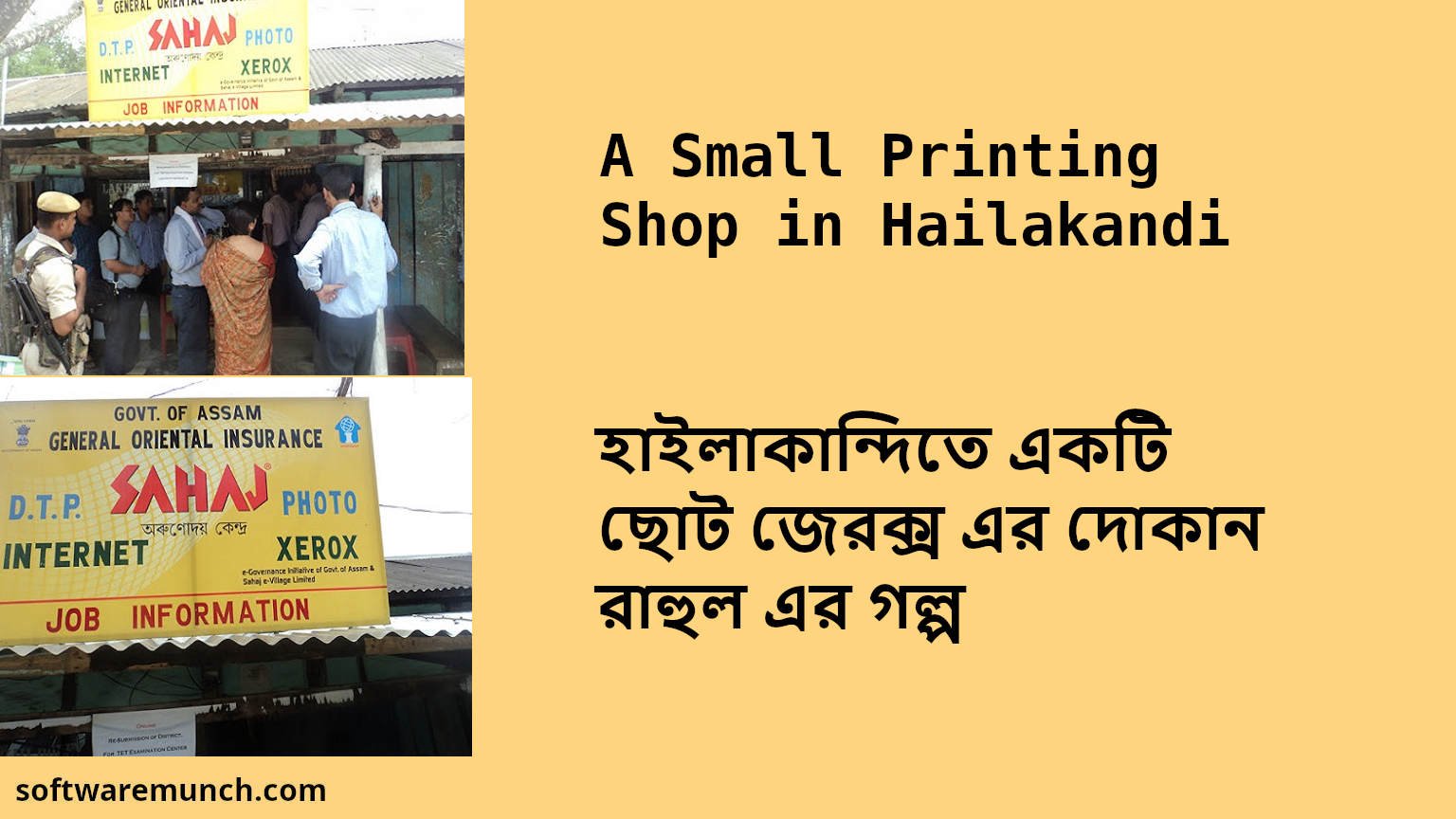Hello everyone, today we will discuss about some one who opened a business in Hailakandi town in Assam, just near Dargaband market. where students and office goers pass every day, he opened a small shop that has become very profitable. It is a photocopy and printing shop owners name is Rahul Das. His story shows how even in a small place with limited money, one can build a steady business.
The beginning of an Idea
Rahul had finished his graduation but could not find a proper job. Like many young people in Assam he tried for government jobs, gave some exams, but nothing worked out for him. He did not want to sit idle at home. one day while going to a government office with his father, he noticed how people were standing in line at a small photocopy shop. Some needed documents copied, some were printing forms and some wanted lamination or xerox copies. The shop was small, but the owner was busy all day.
That moment Rahul thought: “Hey jodi paare te ami na kene?”
Setting up the shop
Rahul did not have a big amount of money. Government loan schemes like mudra were there, but he wanted a faster start. So he used a mix of different investments:
- He borrowed Rs40000 from his elder brother working in Silchar.
- His father gave him permission to use a small room in front of their house near the main road which luckily for him near the bazar.
- with his savings from private tuition, he added another Rs20000.
In total, Rahul collected around Rs70000, enough to begin.
The equipment and investment
Instead of buying new machines, Rahul looked for second hand printers and photocopy machines from Guwahati. He bought one black and white photocopier, one color printer and a small laminator. He also bought a scanner (many students needed it for online form submission).
His total initial investment:
- Black & white photocopier – Rs35000 (second-hand).
- Color printer – Rs15000.
- Laminator : Rs 5000.
- Scanner – ₹3,000.
- Furniture and shop board – ₹7,000.
- Paper and ink stock – ₹5,000.
Within ₹70000 he was ready to start.
The first customers
At first, Rahul was nervous. He thought, “will anyone come to my shop? there are already quite a few printing shops in town.” But he realized location matters. His shop was right near a government office and a college gate.
The first week, students came for printing resumes, passport-size photo copies, and scanning documents. Slowly word spread. People came for railway ticket printouts, Aadhaar copies, lamination of certificates. Rahul started earning ₹500 to Rs600 daily. By the third month, his income was almost Rs20000 per month.
Learning and expanding services
Rahul did not stop at photocopy and printing. He learned a little bit of basic graphic design using Canva and Coreldraw. Now he could also make visiting cards, wedding cards and banners for shops. This gave him extra income.
He also started providing online form filling service. Since many villagers could not do it themselves, they came to Rahul’s shop. His scanner and printer became really very useful.
Ways of investment – not only Loans
Rahul’s story shows that government loans are not always the only way. Some other ways to arrange money are:
- family support: Borrowing from relatives with trust.
- Second hand equipment: Saves 40 to 50% of the cost.
- Partner model: Starting with a friend who shares the investment.
- Local money lenders or chit funds: very Risky but sometimes useful for small amounts.
- Gradual growth: Start with only black and white printing, later add color and lamination.
Rahul himself started small and expanded step by step.
Advertising and customer Base
Rahul did not spend much on advertising. He simply put a bright board outside his shop:
“Rahul Xerox & Print – Photocopy, Print, Scan, Lamination”. thats it!
He also gave small discounts to students, which made them loyal. Word of mouth spread fast, because in small towns everyone knows everyone. Soon his shop became the first choice in the area.
The daily Life of a printing Shop Owner
Now Rahul’s day starts early. At 8 AM he opens the shop. Students rush in for assignments, teachers for printing question papers and office workers for urgent photocopies. In the afternoon, villagers come for Aadhaar or government forms. By evening, he serves people printing wedding cards or lamination of certificates.
The shop is not just a business for him anymore. It has given him an a real identity. People respect him because they know whenever they need a small but important service, Rahul is there.
Why a Printing shop Works in Rural Areas
- constant demand: Students, offices, farmers — all need printing at some point.
- low skill requirement: Basic computer knowledge is enough.
- Daily cash income: No credit system, money comes immediately.
- Scalable business: Start small later you can add internet café, graphic design or digital services.
Rahul often tells his friends: “Do not wait for a big government job. Start small. even a xerox shop can give you a good income if you are serious.”
He dreams of adding more computers, opening a mini cyber cafe, and offering job application support. For now his little shop in Hailakandi is a symbol of how rural youth can create their own path with courage and small investment.
